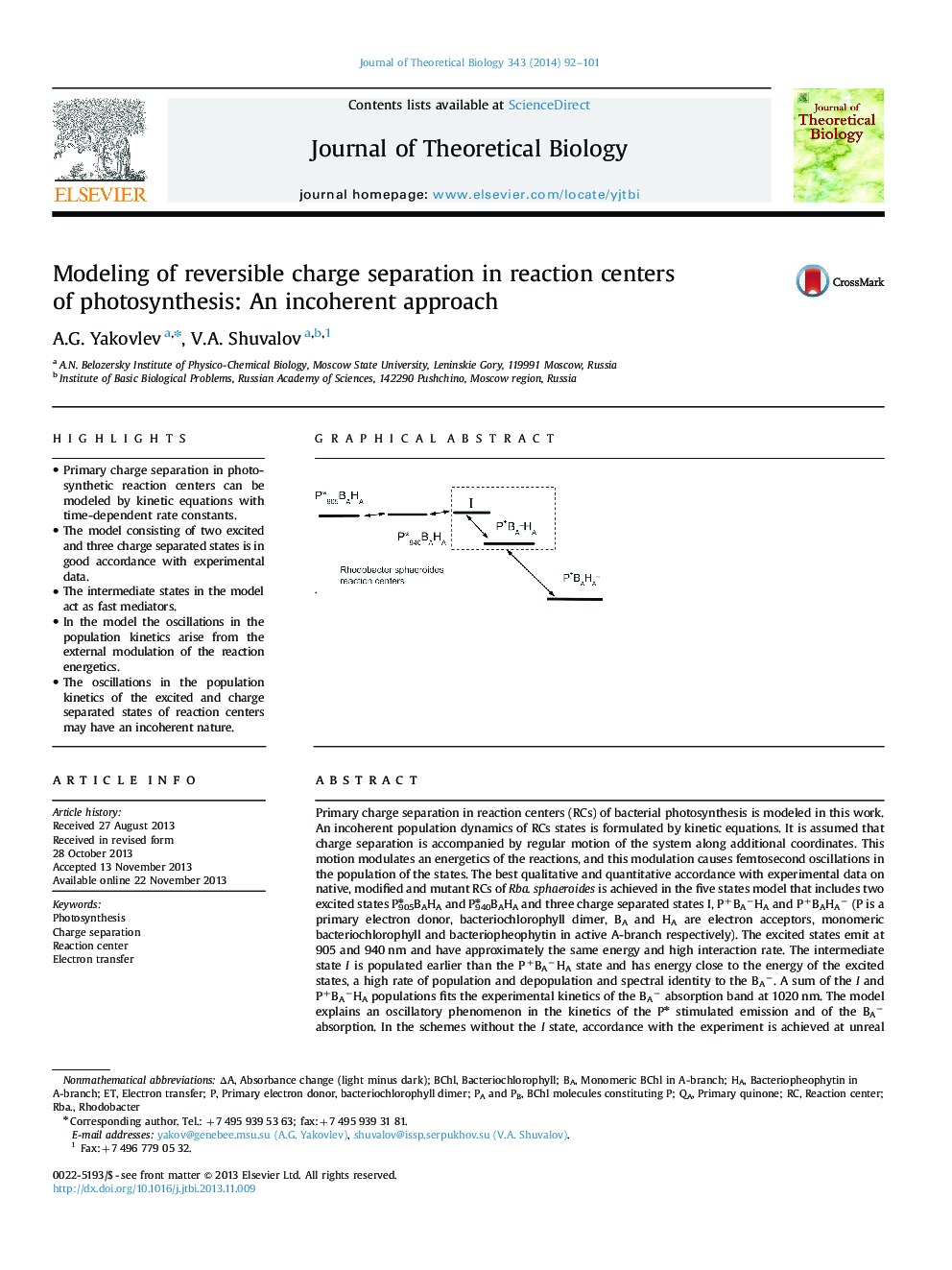| Article ID | Journal | Published Year | Pages | File Type |
|---|---|---|---|---|
| 4496275 | Journal of Theoretical Biology | 2014 | 10 Pages |
highlights•Primary charge separation in photosynthetic reaction centers can be modeled by kinetic equations with time-dependent rate constants.•The model consisting of two excited and three charge separated states is in good accordance with experimental data.•The intermediate states in the model act as fast mediators.•In the model the oscillations in the population kinetics arise from the external modulation of the reaction energetics.•The oscillations in the population kinetics of the excited and charge separated states of reaction centers may have an incoherent nature.
Primary charge separation in reaction centers (RCs) of bacterial photosynthesis is modeled in this work. An incoherent population dynamics of RCs states is formulated by kinetic equations. It is assumed that charge separation is accompanied by regular motion of the system along additional coordinates. This motion modulates an energetics of the reactions, and this modulation causes femtosecond oscillations in the population of the states. The best qualitative and quantitative accordance with experimental data on native, modified and mutant RCs of Rba. sphaeroides is achieved in the five states model that includes two excited states P⁎905BAHA and P⁎940BAHA and three charge separated states I, P+BA−HA and P+BAHA− (P is a primary electron donor, bacteriochlorophyll dimer, BA and HA are electron acceptors, monomeric bacteriochlorophyll and bacteriopheophytin in active A-branch respectively). The excited states emit at 905 and 940 nm and have approximately the same energy and high interaction rate. The intermediate state I is populated earlier than the P+BA−HA state and has energy close to the energy of the excited states, a high rate of population and depopulation and spectral identity to the BA−. A sum of the I and P+BA−HA populations fits the experimental kinetics of the BA− absorption band at 1020 nm. The model explains an oscillatory phenomenon in the kinetics of the P⁎ stimulated emission and of the BA− absorption. In the schemes without the I state, accordance with the experiment is achieved at unreal parameter values or is not achieved at all. A qualitative agreement of the model with the experiment can be achieved at a wide range of parameter values. The nature of the states I and P⁎940BAHA is discussed in terms of partial charge separation between P and BA and inside P respectively.
graphical abstract.Figure optionsDownload full-size imageDownload as PowerPoint slide
